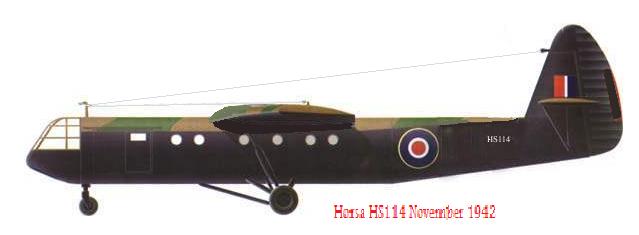| ADF Serials |
 Help Help
 Search Search
 Members Members
 Calendar Calendar
|
| Welcome Guest ( Log In | Register ) | Resend Validation Email |
   |
| Brendan Cowan |
Posted: Mar 30 2012, 03:09 PM
|
||
|
Messageboard Co-ordinator Group: ADF Serials Admin Posts: 2,458 Member No.: 48 Joined: 20-September 05 |
Both Tony McDonald and "The Phantom" are researching information on RAAF/RNZAF aircrew lost while researching the new RNZAF Wellington and Striling Pages. Phantom writes:
http://naa12.naa.gov.au/SearchNRetrieve/In...Barcode=1054519 Does anyone else have any further information? Brendan Attached Image  |
||
| Rod Farquhar |
Posted: Apr 1 2012, 03:49 PM
|
|
C-17A Globemaster III (A41) Group: ADF Serials Team Posts: 789 Member No.: 4 Joined: 1-June 05 |
How about the raid on Telemark to destroy the German heavy water production facility, the gliders crashed into a mountain killing all.
Rod. |
| Brendan Cowan |
Posted: Apr 1 2012, 04:19 PM
|
||
|
Messageboard Co-ordinator Group: ADF Serials Admin Posts: 2,458 Member No.: 48 Joined: 20-September 05 |
I think that you're on the money Rod. This is what Wikipedia has to say about it. BC
|
||
| Brendan Cowan |
Posted: Apr 2 2012, 07:57 AM
|
||
|
Messageboard Co-ordinator Group: ADF Serials Admin Posts: 2,458 Member No.: 48 Joined: 20-September 05 |
Furthermore, Phantom has pointed out that this topic has been covered by the ever informative Gordon B in a newslteer article back in 2008!
;) BC |
||
| Warhawk |
Posted: Jun 25 2012, 10:02 AM
|
|
ADF Serials Research Co-ord Group: ADF Serials Admin Posts: 1,991 Member No.: 82 Joined: 9-March 06 |
Fancy that! Thanks Rod. Was Horsa HS-114
Further to this story, there was also, I found out, a Documentry made in Norway about the whole operation just a year or so ago, including what happened to the Ground team, where they were executed etc and buried. I was contacted by one of their Aviation historians, Øyvind, who has a invested intereset in some RAAF hardware being restored in Oz, on the subject . He sent me a copy of the Documentry. More on that in a future Telegraph Incidently, Glider Pilots become "Ground team" when and if they land safely. Ciao Gordy Attached Image  |
| Brendan Cowan |
Posted: Jun 25 2012, 02:10 PM
|
|
Messageboard Co-ordinator Group: ADF Serials Admin Posts: 2,458 Member No.: 48 Joined: 20-September 05 |
Thanks Gordy,
I'm thinking that we might add the odd pages of notable stories like this involving Australian and New Zealand personnel and their aircraft serving with overseas forces as time and materials permit and there is any interest. ^_^ I must be a glutton for punishment volunteering thoughts like that! :wacko: Cheers Brendan |
| Warhawk |
|
|
ADF Serials Research Co-ord Group: ADF Serials Admin Posts: 1,991 Member No.: 82 Joined: 9-March 06 |
Just adding in the details per past ADF Telegraph Story some years ago
Operation Freshman The battle to prevent heavy water production is the most dramatic chapter in the European secret war. Between 1942 and 1944 a sequence of sabotage actions by the Norwegian resistance movement, as well as Allied bombing, ensured the destruction of the plant and the loss of the heavy water produced. These operations — codenamed "Freshman", "Grouse" and "Gunnerside" — finally managed to knock the plant out of production in early 1943, basically ending the German research. As part of several operations to prevent this development of the German Atomic Bomb during World War two, the Allies launched firstly Operation Freshman on the evening of the 19th November 1942 to destroy the heavy water plant at Rjukan, Norway. Two gliders were to be towed by Halifax bombers of 38th Group from an airfield near Wick, Scotland on the evening of Thursday 19th November 1942. This was to be the first operation to be performed by the Horsa Glider since its design and flight in 1941. What of the Australian connection? The crew of the second Horsa Glider (HS-114, built at Christchurch factory), towed by Halifax W7801, was piloted by two RAAF Pilots, Pilot Officer Norman Arthur Davies Serv#401422 and Pilot Officer Herbert John Fraser Serv#401601. Halifax W7801 was piloted by Flight Lieutenant A.R. Parkinson (Royal Canadian Air Force) and Pilot Officer G.W. Sewell de Gency RAF as co-pilot. The other crew members were Flying Officer A.T.H. Howard RAF, Flight Lieutenant A.E. Thomas RAF, Sergeant J. Falconer RAF, Flight Sergeant A. Buckton RAF and Flight Sergeant G.M. Edwards. The Missing Report and efforts made Both RAAF Pilots tried to save both the glider and their precious cargo of troops when it crashed approximately 2.5 kilometres north-east of Lensmannsgard, 400-500 metres north-west of Gasetjern. This was some four kilometres north from where Halifax W7801 crashed at Helleland, Rogaland. All the flight crews of both aircraft and the glider were killed in the crashes. |
0 User(s) are reading this topic (0 Guests and 0 Anonymous Users)
0 Members:
 |
   |
[ Script Execution time: 0.0235 ] [ 12 queries used ] [ GZIP Enabled ]
Powered by Invision Power Board(U) v1.3 Final © 2003 IPS, Inc.






